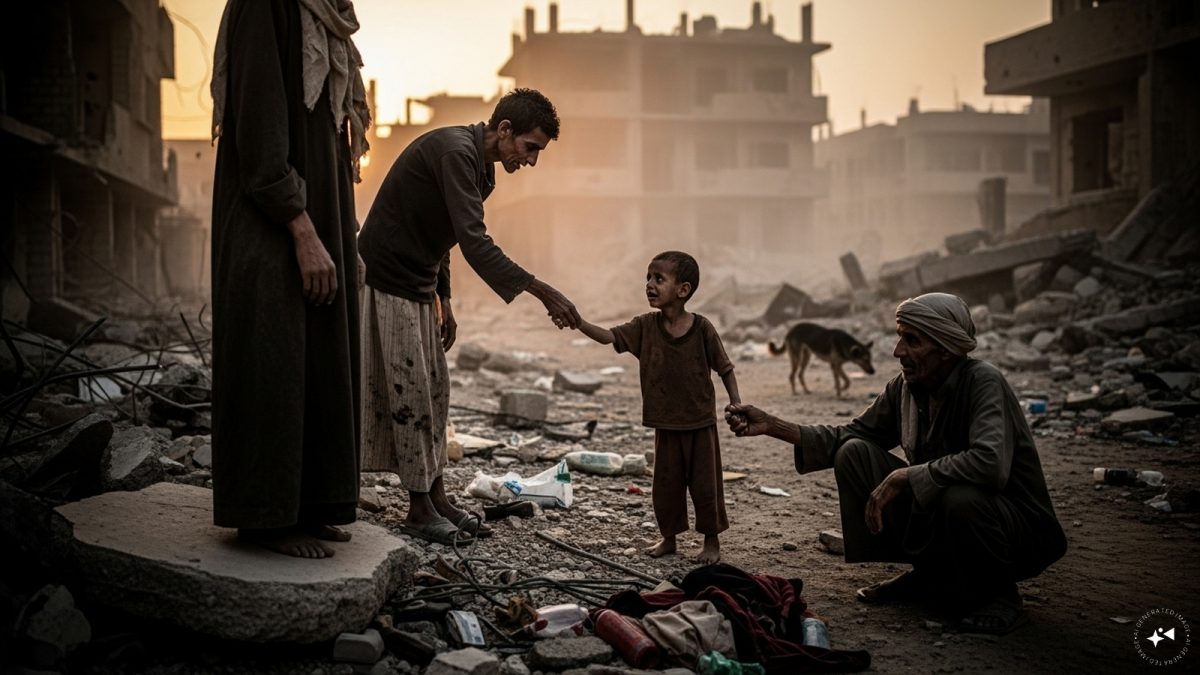Civilians in El Fashir, the capital of Sudan’s North Darfur region, are facing an unprecedented humanitarian crisis as fighting between the Sudanese army and paramilitary RSF intensifies. Starvation, disease and relentless bombardment have left residents in a state of acute desperation with many trapped in homes or makeshift shelters amid a city besieged from all sides.
El Fashir, once a hub of commerce and community life in Sudan’s Darfur region, has become a grim epicenter of human suffering as relentless conflict engulfs the city. As battles between the Rapid Support Forces (RSF) and Sudanese military rage on, civilians find themselves trapped in a merciless siege, facing starvation, disease and unceasing bombardment.
Witnesses recount harrowing scenes of devastation, describing neighbourhoods pounded by airstrikes and homes reduced to rubble. “The situation is catastrophic. There is death everywhere,” a resident told The Washington Post, describing streets littered with debris, abandoned bodies, and civilians too fearful to leave their homes. Food and medical supplies are dwindling, and hospitals have become makeshift shelters for those too weak to move.
The casualty toll keeps rising; more than 70 people were killed on September 15 in a single paramilitary attack on Al Fashir, as reported by Reuters. The city’s hospitals, overwhelmed by wounded and running out of medical supplies, have become sites of desperation. Many of the victims were reportedly targeted in ethnically-driven killings, highlighting the intersection of political and communal violence in the region.
The United Nations has documented a significant rise in civilian casualties across Sudan this year. UN human rights experts said in a report that thousands have been killed in urban centres, with women and children disproportionately affected. “The deliberate targeting of civilians is alarming and may constitute war crimes,” according to a UN report.
Amid the conflict, humanitarian access has been severely restricted. Aid convoys struggle to reach northern Darfur, and local authorities warn that malnutrition is reaching emergency levels.
Similar crises in neighbouring South Sudan have shown that hunger and malnutrition often compound the devastation caused by ongoing fighting. Doctors and aid workers report outbreaks of cholera and other preventable diseases, exacerbated by disrupted sanitation and water supplies.
Civilians also describe a terrifying new reality: even entering the streets carries mortal risk. “You cannot leave your home. Every street is under fire. People are starving, children are crying, and hospitals cannot cope,” another El Fashir resident told The Washington Post.
International organisations are calling for immediate ceasefires and safe corridors for humanitarian assistance. However, attempts to broker dialogue between the Sudanese army and RSF have repeatedly faltered, leaving ordinary citizens trapped in the crossfire. Analysts warn that unless the siege is broken, Darfur could face one of the deadliest civilian catastrophes in Sudan’s recent history.
With the city under siege, residents face stark choices: risk leaving in search of food and medical care, or remain trapped in homes without basic necessities.
As the siege and bombardment persist, hunger and disease threaten to claim even more lives than the fighting itself. United Nations Secretary-General António Guterres has demanded an urgent ceasefire and immediate humanitarian access, warning that “the fighting must stop now” and that safe passage for civilians must be assured.
Without bold, coordinated international intervention and a renewed commitment to accountability, El Fashir’s nightmare will only deepen, joining a growing list of humanitarian catastrophes that have been met with silence and stalemate.
As one UN official said “We should not be under any illusions; the situation could still deteriorate further”. Only swift action by both international actors and Sudan’s warring parties can prevent an even graver disaster and offer hope to the city’s beleaguered survivors.
End of Article

)

